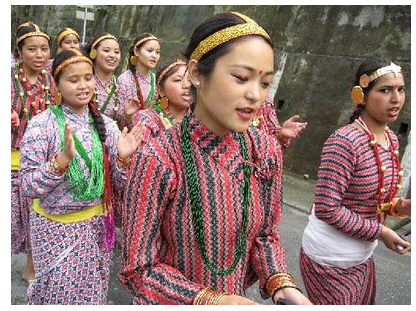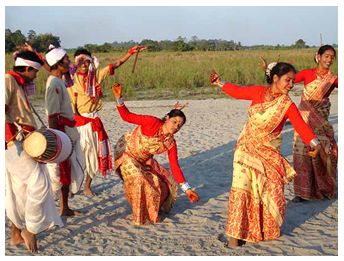DANCE FORMS OF SIKKIM
Contents
· Khang-chen-dzod-nga Dance
· Black Hat (Kali topi) Dance
· Other Dances
Khang-chen-dzod-nga Dance
The Khang-chen-dzod-nga dance festival is usually celebrated during the month of September and is dedicated to the snowy Kanchanjunga Mountain. The dance festival was introduced by Chador Namgyal (1686-1716), the third Chogyal of Sikkim, about two and a half centuries.
The Kanchendzonga deity is portrayed as a fiery red countenanced deity, adorned with a crown of five skulls, riding upon the mythical snow lion and holding the victory banner aloft. The dance elements and props also depict these features of the warrior goddess and it is only performed by the male members of the community. This dance form is also known as Singhi Dance or Lion Dance, by the Nepalese.
Black Hat (Kali topi) Dance
The Kali Topi or Black Hat dance is performed on the occasion of Lossoong i.e. the Sikkimese New Year Day. The dance is essentially performed by the male dancers, who are usually the Lamas. It signifies the victory of good over evil and essentially depicts the legend of a Lama, who annihilated King Land Darma, who had tried to suppress Buddhism in Tibet.
Other Dances
The other major dances of the state of Sikkim are:
- Kankal or Skeleton Dance
- Bara Singha or Stag Dance
- Maruni Dance
- Tamang or Dampu Dance
- Maruni or Nepali Dance
- Dhol Dance
- Lepcha Dance
Pictures



